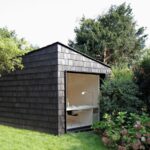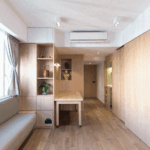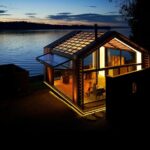Aug 20, 2013 • Sustainability
Sky City: Is The Worlds Tallest Skyscraper The Most Sustainable?

Construction on Sky City, the 220-floor pre-fab skyscraper, started in June 2013, and Broad Sustainable Construction (BSC) hope to have completed construction in just 7 months. The entire structure will be pre-fabricated in 3 months prior to it’s assembly, after which it will be transported to the site – currently a field – in Changsha, China.
Therein lies the question – why? Why build the world’s largest skyscraper in a field? According to BSC, it’s the most sustainable method of catering for the growing population. I know what you’re thinking, ‘A sustainable skyscraper!?‘, and you’re right to think that, but BSC has made a strong and logical case for the Sky City being the most sustainable option available.
Unlike most skyscrapers which err towards being architectural trophies, BSC intends to concentrate on the engineering aspects which will create a space that is efficient, functional, affordable and replicable, with less regard for aesthetic than its contemporaries. BSC writes:
“The world population is increasing at 1.8% year by year. In the near future, land, energy, climate may breach the critical point.”
By housing so many people and and different amenities into the skyscraper, the per capita use of land, and CO2 emissions are greatly reduced. By building upwards instead of outwards hundreds of acres of land will remain untouched. Elevators will be used to travel to school, work and recreational facilities, avoiding the use of thousands of cars on a daily basis.

The truth is vertical distances are a lot shorter than horizontal ones, and by using elevators (an extremely energy-efficient form of transportation), BSC are able to vastly reduce any impact on the environment compared other types of development. A resident of Sky City will have a carbon footprint that’s 1/100th the size of your average home owner.
BSC have even taken into account that not everyone likes elevators – they’ve included a 6-mile long ramp that weaves around the interior of the building from the first floor to the 170th. There are also 56 different 30 foot high courtyards that are used for basketball, tennis swimming, and theatres. As if that wasn’t enough, they’re also going to include 930,000 square feet of interior vertical organic farms.

Here are some quick fire figures that display just how immense this project really is. The building will accommodate 4,450 families in apartments that range from 645 square-feet to 5,000 square-feet. “Local” amenities will include a 100,00 square-foot school, hospital, and office space. It will also feature a hotel with 250 rooms for visitors of the gargantuan complex.
One of the coolest aspects of this construction project is that the building itself only accounts for 10% of the site – the remainder of the land is open parkland.

According to BSC, their buildings are 5-times more energy efficient than conventional ones because they use 8-inch thick insulated walls, triple glazing and exterior shading.
But the truth of whether this building is really all that sustainable is likely to come down to the social aspect. If it degrades into the world’s tallest slum the project would be failure, and will stifle any other attempts to follow in its footsteps. Although, given the measures that have been introduced, it seems unlikely.
Via Treehugger
Join Our Newsletter And
Get 20% Off Plans
Get the latest tiny house news, exclusive
offers and discounts straight to your inbox



